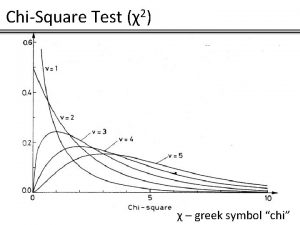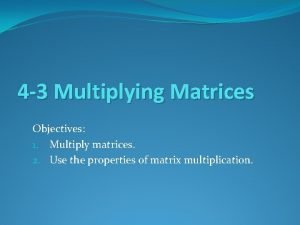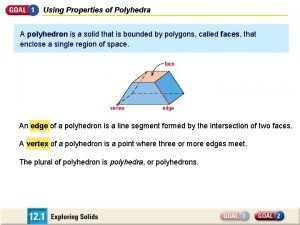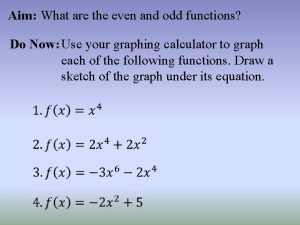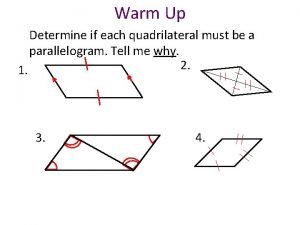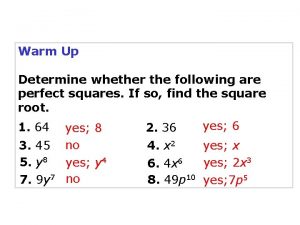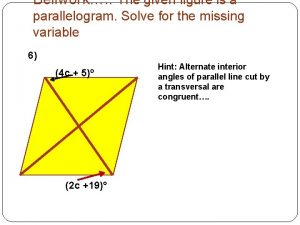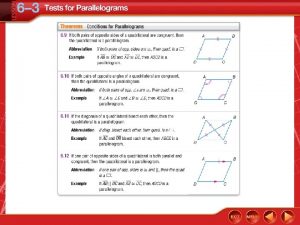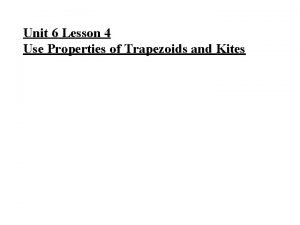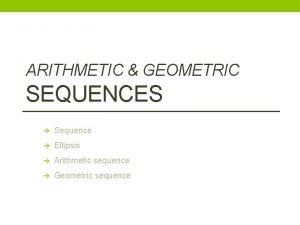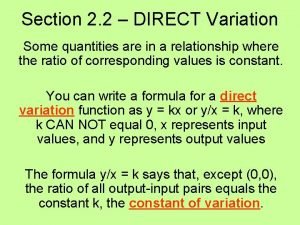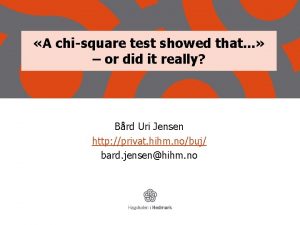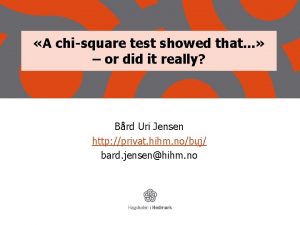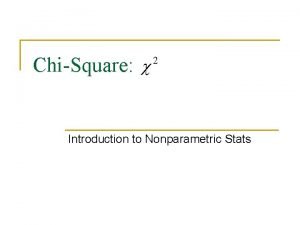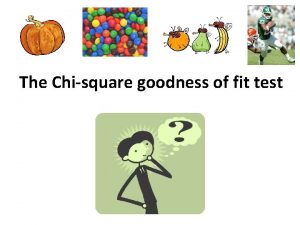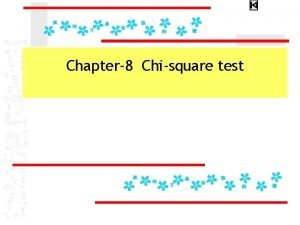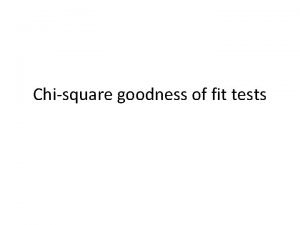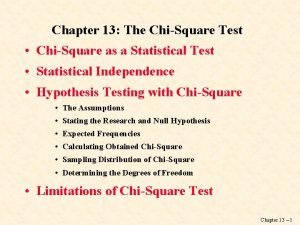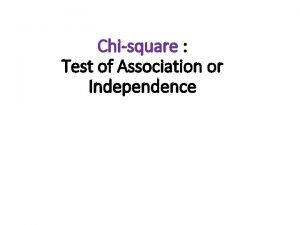Overview Chisquare showed us how to determine whether















- Slides: 15

Overview • Chi-square showed us how to determine whether two (nominal or ordinal) variables are statistically significantly related to each other. • But statistical significance ≠ substantive significance. • The p value does not measure strength of relationship! • So, how do we tell how strong a relationship is? • Is the curiosity killing you?

Measures of Association (for nominal and ordinal variables) • The Proportional Reduction in Error (PRE) Approach – How much better can we predict the dependent variable by knowing the independent variable? • An example – How do you feel about school vouchers? (NES 2000) – Knowing only a d. v. , how do you predict an outcome? – Mode = 238 – How many errors? # mispredictions. – E 1 = 84 + 65 + 194 = 343

A simple PRE example • Now suppose you have knowledge about how a nominal independent variable relates to the dependent variable. Say, religion… School vouchers Protestant Jewish Catholic Total Favor strongly 55 (29. 9%) 85 (39. 5%) 98 (53. 8%) 238 (41. 0%) Favor not strongly 22 (12. 0%) 32 (14. 9%) 30 (16. 5) 84 (14. 5) Oppose not strongly 29 (15. 8%) 22 (10. 2%) 14 (7. 7%) 65 (11. 2%) Oppose strongly 78 (42. 2%) 76 (35. 3%) 40 (22. 0%) 194 (33. 4%) Total 184 (99. 9%) 215 (99. 9%) 182 (100. 0%) 581 (100. 1%) • Now, choose the mode of each independent variable category. 78 + 85 + 98 = 261 correct predictions E 2 = 320 BTW: χ2 = 31. 7

A simple PRE example (cont. ) • Proportional reduction in error = (E 1 – E 2)/E 1 = (343 – 320)/343 =. 067 • We call this a 6. 7% reduction in error… • This calculation is aka “Lambda. ” Note – Lambda can be used when one or both variables are nominal. It bombs when one dv category has a preponderance of the observations (Cramér’s V is useful then).

PRE with two ordinal variables • When both variables are ordinal, you have many options for measuring the strength of a relationship • Gamma, Kendall’s tau-b, Kendall’s tau-c, etc. • Choices, choices…

Biblical Literalism and Education • Is the Bible the word of God or of men? (NES 2000) • Chi-sq = 105. 4 at 4 df p =. 000 reject the null hypothesis

Gamma, Tau-b, Tau-c… So our independent variable, education, reduces our error in predicting Biblical literalism by either 22. 2% (tau-b), 18. 8% (tau-c) or 38. 3 whopping % (gamma) And, SPSS reports sign. level, but let me come back to that later.

• Why are there multiple measures of association? • Statisticians over the years have thought of varying ways of characterizing what a perfect relationship is: tau-b = 1, gamma = 1 tau-b <1, gamma = 1 55 35 40 55 10 25 3 7 30 Either of these might be considered a perfect relationship, depending on one’s reasoning about what relationships between variables look like.

I’m so confused!!

Rule of Thumb • Gamma tends to overestimate strength but gives an idea of upper boundary. • If table is square use tau-b; if rectangular, use tau-c. • Pollock (and we agree): τ <. 1 is weak; . 1<τ<. 2 is moderate; . 2<τ<. 3 moderately strong; . 3< τ<1 strong.

A last example • Theory: People’s partisanship leads them to develop distinct ideas about public policies. • A case in point: Dem’s, Ind’s, and Rep’s develop different ideas about whether immigration should be increased, kept the same, or decreased

Last example (cont. ) • Specifically, Dem’s have tended to favor minorities and those with less power. Therefore, I anticipate that Dem’s will be most in favor of increasing immigration, Rep’s will be most in favor of decreasing it. • Let’s test this out using NES data.



Last example (cont. ) • Conclusion There is a relationship between partisanship and feelings about immigration— i. e. , what we saw in the table is not a result of chance. The relationship is weak (tau-c =. 04). Dem’s are only a little more likely to favor immigration, Reps only a little more likely to oppose it.
 Chi square greek symbol
Chi square greek symbol Whether the weather be fine
Whether the weather be fine Determine whether each word
Determine whether each word Determine whether each matrix product is defined
Determine whether each matrix product is defined 1-7 three dimensional figures
1-7 three dimensional figures Determine whether each pair of polygons is similar
Determine whether each pair of polygons is similar Properties of polyhedra
Properties of polyhedra Odd and even function calculator
Odd and even function calculator Determine if each quadrilateral is a parallelogram
Determine if each quadrilateral is a parallelogram Determine whether each trinomial is a perfect square
Determine whether each trinomial is a perfect square Determine whether the quadrilateral is a parallelogram.
Determine whether the quadrilateral is a parallelogram. State whether each quadrilateral is a parallelogram
State whether each quadrilateral is a parallelogram Determine whether pq is tangent to circle r
Determine whether pq is tangent to circle r How to find the missing angle of a kite
How to find the missing angle of a kite Difference between recursive and explicit formula
Difference between recursive and explicit formula Determine whether y varies directly with x
Determine whether y varies directly with x
